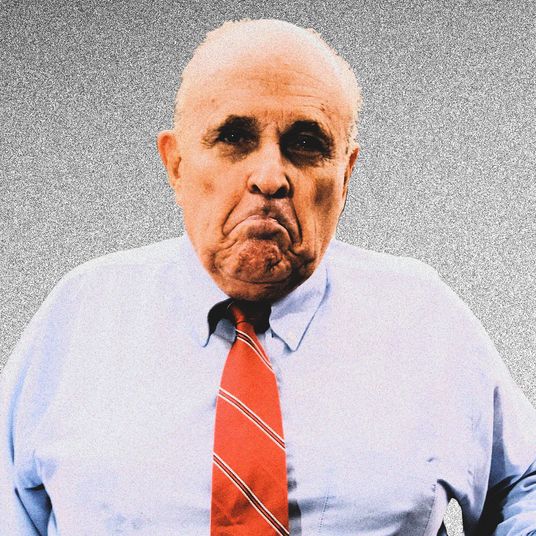In 2017, Samuel Moyn, a left-wing Yale professor of law and history, co-wrote a New York Times op-ed headlined, “Trump Isn’t a Threat to Our Democracy. Hysteria Is.” In the essay, Moyn diagnosed American liberals as afflicted with what he called “tyrannophobia,” confidently proclaiming, “There is no real evidence that Mr. Trump wants to seize power unconstitutionally, and there is no reason to think he could succeed.”
Well, we all make mistakes from time to time. But rather than acknowledge his misjudgment, or at least back away quietly, Moyn has instead expanded the argument to book length. His new tome, Liberalism Against Itself: Cold War Intellectuals and the Making of Our Times, presses his case that American liberalism is a failed creed and locates its alleged failure in an irrational fear of dictatorship borne of anti-communism. Moyn has built a cult following on the left, and his book, in conjunction with his punditry, forms one of the most influential efforts on the left to discredit liberalism not just politically but intellectually so as to clear room for something far more radical.
From the 1930s through the 1960s, communism split the American left. In the 1930s, many progressives saw communists as their allies against fascism. But as the cruel absurdity of communism revealed itself to the West, through the Soviet show trials and then the Hitler-Stalin pact, greater numbers of progressives began to see communism as repressive and inherently illiberal.
Within a few years after World War II, most liberals severed all cooperation with communists. They did this for pragmatic reasons (communists had exploited ties with the Roosevelt administration to spy on it, and post-war communism grew so poisonous to the public that Democrats needed to repudiate it to retain politically viable), but also for principled ones. The Stalinist character of communist party organizations with which many progressives had contact in the 1930s — organizations that demanded rigid adherence to an often absurd party line and terrorized dissidents — made clear the inherently authoritarian nature of the thought system they represented.
Many liberal intellectuals came to see Marxism not just as a souped-up version of their own beliefs (communists liked to call themselves “liberals in a hurry”) but as a fundamentally alien doctrine. A philosophy that deems its political opponents to be an enemy class is unavoidably going to abuse them. Marx’s dictatorship of the proletariat was never going to be temporary.
Liberalism Against Itself is a critique of this philosophical break, which Moyn calls “a fateful reversal for liberalism.” Moyn sees the liberal condemnation of the Soviet Union as equivalent to Nazi Germany as a tragic error. When Cold War liberals decided they could not accept cruelty and immorality in the service of some utopian goal, he argues, they foreclosed “any notion that the furtherance of a better future functioned as a justification for immorality now.” By tying their own hands out of misplaced fear of tyranny and shying away from utopian promises, Myn argues that liberals set the stage for the right’s triumph in the 1970s and beyond.
The word “argues” overstates things. Moyn actually assumes all the most important premises in his argument. He does not make a case for why “immorality” (his own term!) is both safe and useful for advancing human welfare. He likewise makes no case for why it was wrong to equate fascism and communism. (After all, Stalin’s Russia and Hitler’s Germany, with their ubiquitous propaganda, secret police, concentration camps, and systematized slaughter of internal enemies real and imagined, resemble no other states in history so much as each other).
Most importantly, Moyn hardly bothers to substantiate his assumption that liberalism should be presumed a historical failure. For all the reversals liberalism has suffered over the last three-quarters of a century, it has made the United States a fairer and more prosperous society, enacting civil and voting-rights laws, expanding the safety net, creating environmental and other regulatory protections, and extending legal equality to gays and other minorities. Moyn, to be sure, would contest this assertion, but he does not bother to do so, even in brief. His audience has to simply accept on faith that liberalism is dying.
His 2017 op-ed presented Trump’s election victory the year before as proof that liberalism was a failed creed. His book, updated for new events, substitutes the fact that “Joseph Biden managed (barely) to keep Trump from a second term.” Apparently, the death of liberalism can be inferred equally well from the Democratic Party’s defeats and victories.
Now, maybe Moyn simply wishes to direct his argument to an audience that already believes the Democratic Party is useless and communism was not that bad. Fair enough. The trouble is that even the narrow target of his polemic, the philosophical underpinnings of Cold War liberals, is not addressed faithfully.
“Cold War liberalism” is an epithet coined by left-wing critics of post-war liberals, but it does capture a real tradition of political thought. Liberals in the post-war era saw themselves as fighting a two-front war against reaction on the right and communism on the left. The tradition was embodied politically by organs like Americans for Democratic Action, the AFL-CIO, Walter Reuther, and the Democratic Party’s northern liberal wing, and intellectually by the likes of historians Richard Hofstadter, Arthur Schlesinger, and others.
Moyn’s study of the Cold War liberals loads the deck by selecting an idiosyncratic cohort of intellectuals to study, leaving out some of the most important figures in Cold War liberal thought (Hofstadter, Schlesinger) while including several non-liberals, like Hannah Arendt and Lord Acton, and even conservatives, like Gertrude Himmelfarb and Friedrich Hayek. It’s a lot easier to depict the Cold War liberals as enemies of progress if you sprinkle a dose of conservatives into your sample.
And again, it would be fine if Moyn is merely engaged in an abstract study of a collection of 20th-century intellectuals who interest him. But he explicitly holds up his sample of “Cold War liberals” as representative of the direction of American liberalism as a whole.
His description of that tradition is just flatly inaccurate. American liberal anti-communists fought for civil rights, a larger welfare state, and a more egalitarian economy while accepting capitalism and demanding adherence to liberal democracy. In Moyn’s telling, however, they advocated a “spare commitment to freedom from state excess,” and by the end of the book, he escalates his description, accussing his targets of advocating “Cold War libertarianism,” a description that would surely astound any self-described libertarian.
Moyn’s analysis leans heavily on the premise that liberals are responsible for any conservative political success. “The central issue,” he asserts, “has to be how Cold War liberals of the 1940s through the 1960s left liberalism (including liberal socialism) undefended at precisely the moment when the ideology of market freedom was becoming a threat.” Even as progressive a liberal as John Rawls comes in for blame: “A Theory of Justice was only a prelude to a new mismatch, in which egalitarian justice was defended in principle while neoliberal inequality ascended in practice.”
If you study this sentence carefully, you will notice that Moyn uses the passive voice to smuggle in a claim he does not and cannot defend directly. Egalitarian justice was defended (By who?) while inequality ascended (On its own? Because policymakers enacting inegalitarian policies were following Rawls’s precepts? Or because they ignored them?).
The liberal defense would be that the limitations of public opinion and the status-quo bias of American political systems make progressive change difficult to achieve. Moyn does not accept these constraints. Last year, Moyn wrote an op-ed blaming liberals for adhering to the Constitution and urging them to abolish both the Senate and judicial review. “Congress could simply pass a Congress Act, reorganizing our legislature in ways that are more fairly representative of where people actually live and vote, and perhaps even reducing the Senate to a mere ‘council of revision’ (a term Jamelle Bouie used to describe the Canadian Senate), without the power to obstruct laws,” he wrote. “In so doing, Congress would be pretty openly defying the Constitution to get to a more democratic order — and for that reason would need to insulate the law from judicial review.” The most revealing word in this passage is “simply.”
One can certainly make a moral argument for a radical revision of American institutional design. But that case would need to account for both the impediments facing such a project and the likely conservative response. Moyn does neither.
A plausible argument for radical measures would also need to honestly account for what liberals have been able to achieve under the existing Constitution. Moyn’s indictment treats the record of American liberalism as an unbroken series of defeats. In his op-ed denouncing liberal “tyrannophobia,” Moyn wrote, “And while the New Deal was not dismantled, efforts to extend it — which still seemed a real possibility in Harry Truman’s early years in office — were denounced as pink tyranny, boosting state power at the expense of democracy. Casualties included attempts to create a national health care program.”
Once again, Moyn’s use of passive voice makes his specific claim difficult to pin down, but Truman did try to pass a national health-care program. And while he failed, every succeeding Democrat save one (Jimmy Carter) continued to try until Barack Obama succeeded. Meanwhile, liberals succeeded in expanding the New Deal in multiple ways, most spectacularly under Cold War liberal Lyndon Johnson. So what is he even talking about?
The same op-ed instructs, “A dysfunctional economy, not lurking tyranny, is what needs attention if recent electoral choices are to be explained — and voting patterns are to be changed in the future.” The Biden administration has followed this prescription, passing trillions of dollars in economic stimulus, trade rebalancing, and subsidies for manufacturing. The result has been a sharp decrease in inequality, rapid bottom-heavy wage growth, and a historic wave of reindustrialization. That fact poses a significant challenge to Moyn’s indictment of contemporary liberalism, one he ignores altogether.
The best explanation for this omission is that Moyn’s indictment depends on ignoring any evidence of liberal progress. “Liberals did not appear to learn the actual lesson Cold War liberalism teaches — or that of a global ‘war on terror’ declared against shadowy and ‘totalitarian’ enemies,” he charges. In reality, while the war on terror originally obtained support from liberals (including me), liberals not only learned lessons from the failure but engineered a clear course correction. The Obama administration pulled out of Iraq, and the Biden administration pulled out of Afghanistan and all but ended the drone war.
If Moyn acknowledged that Biden delivered big increases in living standards for the working class, he might have to reexamine his insistence that economic stagnation is the cause of Trump’s appeal. And if Moyn acknowledged that liberals turned against the post-9/11 war on terror, he might have to concede that “tyrannophobia” is not an intellectual pathology at all. On the contrary, the allegedly tyrannophobic liberals were able to discern Trump’s threat to democracy. If there is a historic through line from communism to Trumpism, it is not that liberals worried too much about threats to democracy, but that their critics worried too little.




























